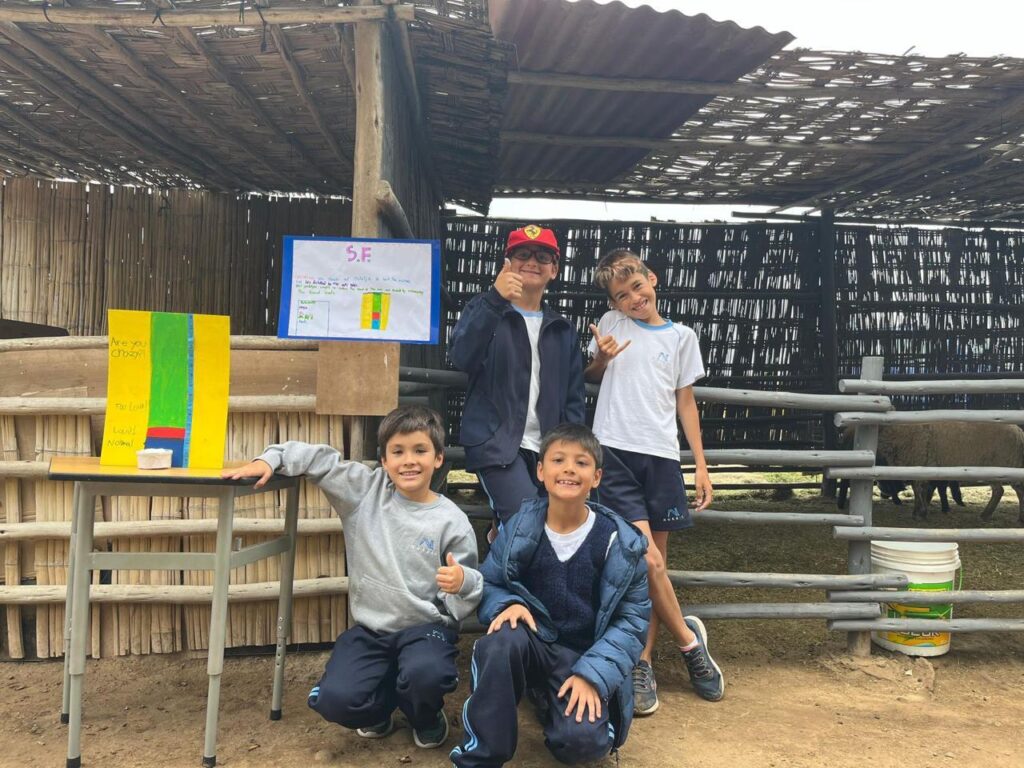At our school, community engagement is not just an abstract value, but a daily practice manifested through projects designed based on students’ interests and concerns. These projects, beyond addressing academic issues, seek to offer solutions to local problems, both within the school and in our surroundings.
One of the most significant examples of this approach is the project developed by 3rd grade students, who, after learning about ecosystems and the importance of caring for the environment, engaged in a series of investigations and activities to apply their knowledge. During a visit to different spaces in the school, students identified that our community is made up of a series of interconnected factors: plants, animals, students, school staff, and the community at large. From this observation, they understood that all these elements form an ecosystem that depends on mutual respect and interdependence.
This understanding motivated them to take ownership of various local problems and seek solutions through teamwork and creativity. One group of students, observing interactions between classmates during recess, noticed a lack of sufficient signage regarding the proper use of trash cans. Aware of the importance of cleanliness and order, they decided to investigate how they could encourage their colleagues to use the appropriate containers. To achieve this, they proposed installing new trash cans and designed a campaign to draw attention to the importance of keeping the environment clean.
Another group, focused on caring for the school’s plants, noticed that some were not growing properly. After investigating variables that could influence their growth, such as exposure to wind and shade, they decided to conduct experiments to protect some plants from these factors. In their research, they discovered that shade improved the growth of some species, and they decided to share their findings with the entire school community to continue improving this space. A third group of students, concerned about the welfare of our animals, realized that excessive noise was affecting the animals. To address this problem, they created a homemade sound meter and presented their findings to the community. Their goal was to raise awareness about noise pollution and respect the environment of animals. Although they have no voice, they are an integral part of our community and deserve to be treated with empathy and respect.
Additionally, some students observed a problem at Venecia Beach, the space in front of our school where many students pass by. They noticed that the entrance was filled with trash left by passersby, which affected both the aesthetics and the health of the environment. In response, they decided to create a recycled trash can using old tires and placed it at the entrance to the parking lot so people could dispose of their trash responsibly. Finally, a group of students, noticing the lack of playground equipment in the elementary school playground, decided to create new recreational spaces. Using recycled wood from disused furniture, they designed a “world game” that would encourage interaction and outdoor play, thus addressing a specific need of the students.
Through this project, our students not only found creative solutions to real-life community problems, but also learned the importance of teamwork, making decisions based on respect for the environment, and assuming responsibilities as engaged citizens.
This educational approach allows us to meet the profile of the students we aim to develop: responsible and conscientious citizens, capable of using their critical judgment to address local challenges sustainably. Students not only learn academic concepts, but also develop skills to be agents of change in their community, promoting harmony among all living beings and respecting the natural resources we share.


